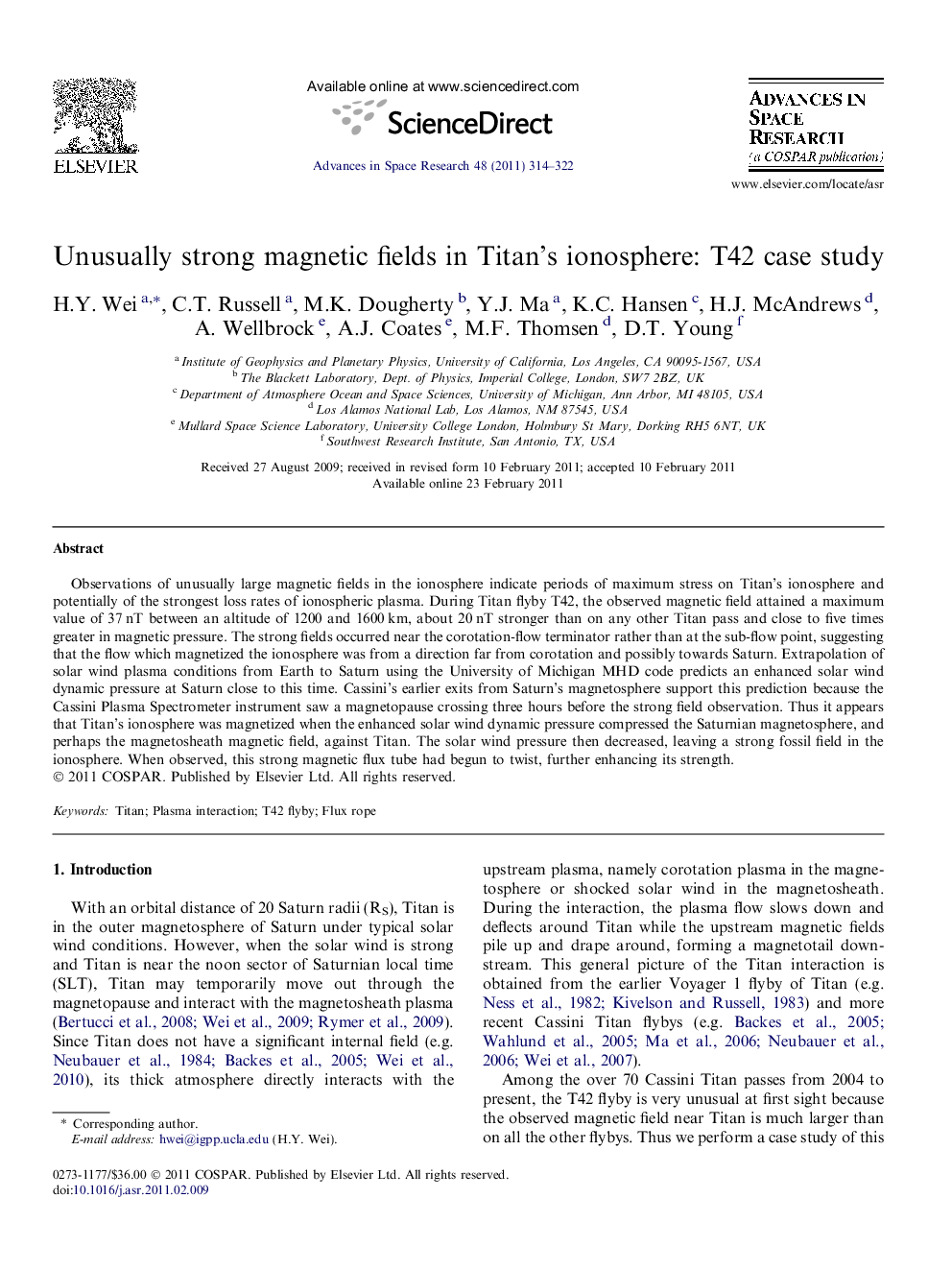| Article ID | Journal | Published Year | Pages | File Type |
|---|---|---|---|---|
| 1765922 | Advances in Space Research | 2011 | 9 Pages |
Observations of unusually large magnetic fields in the ionosphere indicate periods of maximum stress on Titan’s ionosphere and potentially of the strongest loss rates of ionospheric plasma. During Titan flyby T42, the observed magnetic field attained a maximum value of 37 nT between an altitude of 1200 and 1600 km, about 20 nT stronger than on any other Titan pass and close to five times greater in magnetic pressure. The strong fields occurred near the corotation-flow terminator rather than at the sub-flow point, suggesting that the flow which magnetized the ionosphere was from a direction far from corotation and possibly towards Saturn. Extrapolation of solar wind plasma conditions from Earth to Saturn using the University of Michigan MHD code predicts an enhanced solar wind dynamic pressure at Saturn close to this time. Cassini’s earlier exits from Saturn’s magnetosphere support this prediction because the Cassini Plasma Spectrometer instrument saw a magnetopause crossing three hours before the strong field observation. Thus it appears that Titan’s ionosphere was magnetized when the enhanced solar wind dynamic pressure compressed the Saturnian magnetosphere, and perhaps the magnetosheath magnetic field, against Titan. The solar wind pressure then decreased, leaving a strong fossil field in the ionosphere. When observed, this strong magnetic flux tube had begun to twist, further enhancing its strength.
